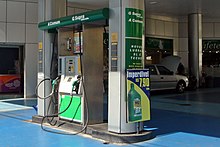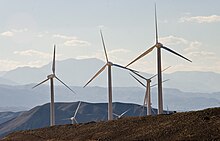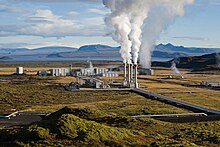Philipppines | December 20, 2013
What is renewable energy? From Wikipedia
It is not safe to assume that we are talking about the same language when we talk about renewable energy and the Renewable Energy Act of 2008 in the Philippines.
1. How do we define renewable energy:
Definition from Wiki:
"Renewable energy is generally defined as energy that comes from resources which are continually replenished on a human timescale such as sunlight, wind, rain, tides, waves and geothermal heat.["
" Renewable energy is derived from natural processes that are replenished constantly. In its various forms, it derives directly from the sun, or from heat generated deep within the earth. Included in the definition is electricity and heat generated from solar, wind, ocean, hydropower, biomass, geothermal resources, and biofuels and hydrogen derived from renewable resources."
The important words are replenished on a human timescale. Coal and petroleum are both fossil fuels and were formed from biomass that were buried under the earth for millions of years. That is not within the human time scale. When we consume coal and petroleum, they are gone and will be replaced only after million of years, in the meantime, you have run out of coal and petroleum.
Sunlight, wind, rain, tides, waves and geothermal heat are free, are there and recur constantly; but they have to be harnessed.
The other consideration is natural processes. Thus refined fuels (how about batteries) are not renewables.
2. History of renewables
Before 1900, before use of coal and petroleum, most energy were renewables - wind running the ships, wood fires heating homes and used for cooking. In 1873, the study of solar energy was made as answer to concern when coal runs out. As early as 1911, Scientific American saw that solar energy will be the sole source of energy when other fuels have run out.
Solar energy was mainly used for cooling and heating homes solar panels were too expensive to build until l980.
In OECD countries, the total share of renewables to total energy rose from 4.8 % in l971 to 7.6% in 1990 (still very small). For the entire world, renewables contributed only 13% of the total in 2010 (still small and renewables would still be in infancy stage?)

From Wikipedia,
Renewables replaces traditional fuels in 4 distinct areas: power generation, heating, transportation and rural/off grid energy sources.
3. Mainstream renewable technologies
They are:
1. Wind power/turbines
2. Solar panels
3. Hydro
4. Geothermal
5. Biomass/biofuel
6. Carbon neutral fuels (synthetic fuels recovered from fuel waste and effluents)
More from Wiki on Mainstream Renewable technologies:
Wind power
Main article: Wind power
Airflows can be used to run wind turbines.
Modern utility-scale wind turbines range from around 600 kW to 5 MW of
rated power, although turbines with rated output of 1.5–3 MW have become
the most common for commercial use; the power available from the wind
is a function of the cube of the wind speed, so as wind speed increases,
power output increases dramatically up to the maximum output for the
particular turbine.[30] Areas where winds are stronger and more constant, such as offshore and high altitude sites, are preferred locations for wind farms. Typical capacity factors are 20-40%, with values at the upper end of the range in particularly favourable sites.[31][32]Globally, the long-term technical potential of wind energy is believed to be five times total current global energy production, or 40 times current electricity demand, assuming all practical barriers needed were overcome. This would require wind turbines to be installed over large areas, particularly in areas of higher wind resources, such as offshore. As offshore wind speeds average ~90% greater than that of land, so offshore resources can contribute substantially more energy than land stationed turbines.[33]
Hydropower
See also: Hydroelectricity and Hydropower
Energy in water can be harnessed and used. Since water is about 800 times denser than air, even a slow flowing stream of water, or moderate sea swell, can yield considerable amounts of energy. There are many forms of water energy:- Hydroelectric energy is a term usually reserved for large-scale hydroelectric dams. The largest of which is the Three Gorges Dam in China and a smaller example is the Akosombo Dam in Ghana.
- Micro hydro systems are hydroelectric power installations that typically produce up to 100 kW of power. They are often used in water rich areas as a remote-area power supply (RAPS).
- Run-of-the-river hydroelectricity systems derive kinetic energy from rivers and oceans without the creation of a large reservoir.
Solar energy

Monocrystalline solar cell
Solar technologies are broadly characterized as either passive solar or active solar depending on the way they capture, convert and distribute solar energy. Active solar techniques include the use of photovoltaic panels and solar thermal collectors to harness the energy. Passive solar techniques include orienting a building to the sun, selecting materials with favorable thermal mass or light dispersing properties, and designing spaces that naturally circulate air.[34] Solar energy capture is also being linked to research involving water splitting and carbon dioxide reduction for the development of artificial photosynthesis or solar fuels.[35]
Biomass

A cogeneration plant in Metz, France. The station uses waste wood biomass as energy source, and provides electricity and heat for 30,000 dwellings.
Through the process of photosynthesis, plants capture the sun's energy. When the plants are burnt, they release the sun's energy they contain. In this way, biomass functions as a sort of natural battery for storing solar energy.
In general there are two main approaches to using plants for energy production: growing plants specifically for energy use (known as first and third-generation biomass), and using the residues (known as second-generation biomass) from plants that are used for other things. See biobased economy. The best approaches vary from region to region according to climate, soils and geography.
The proportion of truly renewable biomass in use is uncertain, as for example peat, one of the largest sources of biomass, is sometimes regarded as a renewable source of energy. However due to peats extraction rate in industrialized countries far exceeding its slow regrowth rate of 1mm per year,[36] and due to it being reported that peat regrowth takes place only in 30-40% of peatlands,[37] There is considerable controversy with this renewable classification.[38] Organizations tasked with assessing climate change mitigation methods differ on the subject, the UNFCCC classify peat as a fossil fuel due to the thousand plus year length of time for peat to re-accumulate after harvesting,[38] another organization affiliated with the United Nations also classified peat as a fossil fuel.[39] However, the Intergovernmental Panel on Climate Change (IPCC) has begun to classify peat as a "slow-renewable" fuel,[40] with this also being the classification used by many in the peat industry.[38]
Further controversy surrounding the classification of all biomass as "renewable" centers around the fact that depending on the plant source, it can take from 2 to 100 years for different sources of plant energy to regrow, such as the difference between fast growing switch grass and slow growing trees, therefore due to the high emission intensity of plant material, researchers have suggested that if the biomass source takes longer than 20 years to regrow, they argue the plant source should not be regarded as renewable from a climate change mitigation standpoint.[41]
As of early 2012, 85 of 107 biomass plants operating in the U.S. had been cited by federal or state regulators for violating clean air or water laws over the past five years.[42] The Energy Information Administration projected that by 2017, biomass is expected to be about twice as expensive as natural gas, slightly more expensive than nuclear power, and much less expensive than solar panels.[43]
Biofuel
See also: Biofuel and Sustainable biofuel

Brazil has bioethanol made from sugarcane available throughout the country. Shown a typical Petrobras gas station at São Paulo with dual fuel service, marked A for alcohol (ethanol) and G for gasoline.
Bioethanol is an alcohol made by fermenting the sugar components of plant materials and it is made mostly from sugar and starch crops. With advanced technology being developed, cellulosic biomass, such as trees and grasses, are also used as feedstocks for ethanol production. Ethanol can be used as a fuel for vehicles in its pure form, but it is usually used as a gasoline additive to increase octane and improve vehicle emissions. Bioethanol is widely used in the USA and in Brazil. The energy costs for producing bio-ethanol are almost equal to, the energy yields from bio-ethanol. However, according to the European Environment Agency, biofuels do not address global warming concerns.[45]
Biodiesel is made from vegetable oils, animal fats or recycled greases. Biodiesel can be used as a fuel for vehicles in its pure form, but it is usually used as a diesel additive to reduce levels of particulates, carbon monoxide, and hydrocarbons from diesel-powered vehicles. Biodiesel is produced from oils or fats using transesterification and is the most common biofuel in Europe.
Biofuels provided 2.7% of the world's transport fuel in 2010.[46]
Geothermal energy
Main article: Geothermal energy
Geothermal energy is from thermal energy generated and stored in the Earth. Thermal energy is the energy that determines the temperature of matter. Earth's geothermal energy originates from the original formation of the planet (20%) and from radioactive decay of minerals (80%).[47] The geothermal gradient,
which is the difference in temperature between the core of the planet
and its surface, drives a continuous conduction of thermal energy in the
form of heat from the core to the surface. The adjective geothermal originates from the Greek roots geo, meaning earth, and thermos, meaning heat.The heat that is used for geothermal energy can be from deep within the Earth, all the way down to Earth’s core – 4,000 miles (6,400 km) down. At the core, temperatures may reach over 9,000 °F (5,000 °C). Heat conducts from the core to surrounding rock. Extremely high temperature and pressure cause some rock to melt, which is commonly known as magma. Magma convects upward since it is lighter than the solid rock. This magma then heats rock and water in the crust, sometimes up to 700 °F (371 °C).[48]
From hot springs, geothermal energy has been used for bathing since Paleolithic times and for space heating since ancient Roman times, but it is now better known for electricity generation.



